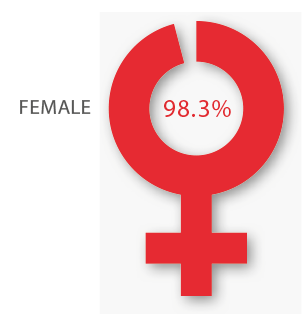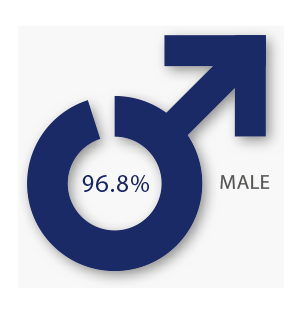GENDER PAY GAP REPORT 2020
Introduction
At CEMEX, we continue to believe in building a better future for everyone. We also continue to recognise that the growth and success of CEMEX is directly attributed to the talented people we employ. We value diversity in our workforce and believe that the integration of people with different backgrounds, perspectives, and life experiences makes CEMEX more competitive, resilient, and adaptable.
We have continued our commitment to creating a culture that is respectful and fair to all and promotes inclusivity and equality of opportunity for everyone. We remain focussed on attracting and recruiting individuals from the widest talent pool, encouraging career progression within CEMEX, and rewarding people fairly, in order to improve our gender balance and by doing so improve our gender pay position.
Measuring the Gender Pay Gap
Gender Pay Gap reporting in the UK is now in its fourth year. Due to the coronavirus pandemic, compulsory reporting for the 2019-20 reporting cycle was suspended. However, CEMEX chose to report in 2020 on a voluntary basis, recognising the importance of assessing our progress.
A gender pay gap should not be confused with equal pay. Equal pay is concerned with ensuring that women and men are paid the same for the same work or for work of equal value. The gender pay gap is the difference in the average hourly rate of pay for all women compared with all men, irrespective of their role in the business, expressed as a percentage of men's average pay. The method of calculating this information is set out in the legislation.
The gender pay reporting legislation requires businesses with 250 or more employees to publish their gender pay gaps annually, focusing on 6 key elements:
- Mean gender pay gap
- Median gender pay gap
- Mean bonus pay gap
- Median bonus pay gap
- The proportion of men and women receiving a bonus
- The proportion of men and women in each quartile of the organisation's pay structure
This report contains data for the entity of CEMEX UK Operations Ltd across our different businesses, including Cement, Readymix, Aggregates, Urbanisation Solutions, and support functions. The snapshot date for the data is 5 April 2020.
Gender Pay Gap Results
Mean Pay Gap
3.3%
Median Pay Gap
-1.4%
Pay Quartiles

Gender Bonus Gap Results
Mean Bonus Gap
12.9%
Median Bonus Gap
16.7%
Proportion of the workforce that received a bonus payment


Gender Pay Gap
The gender pay gap looks at the distribution of men and women across all job levels of our organisation, and how this translates into the average salary and bonus payments made as a result of this.
Headlines about the gender pay gap tend to focus on the median figure, which ignores extremes and is therefore thought to be the most representative measure. However, it is important to report on all measures as each one can help us to understand something different about the underlying causes of the gender pay gap and one measure can mask issues that another can highlight. Our median gender pay, and median bonus pay gaps have remained relatively stable over the past four years. Our median pay gap is -1.4% in favour of women, a decrease of 0.5% on last year. In comparison the UK construction industry reported a median pay gap of 20.43% in 2018 (no reporting in 2019 due to the pandemic).
The proportion of men and women receiving a bonus is consistent with the previous year. The gaps continue to be influenced by higher basic salaries, eligibility levels for senior roles and reorganisations. The % of our female work force in part-time roles is greater than males in part-time roles, which continues to influence our results, as the reporting formula requires us to include actual bonuses paid, with pro-rated bonuses reflecting actual hours worked.
Distribution
We continue to maintain an inherent imbalance of gender distribution, which is the nature of the industry.
As an organisation which remains very similar year on year in terms of male/female split, relatively small changes in the distribution of women across the different pay quartiles in the organisation can have a significant impact on our gender pay gap.
We have seen a slight drop in female representation within CEMEX in 2020 which is a reflection of general fluctuations in headcount due to ongoing recruitment and reorganisation where we have seen a small number of women leave the business within the Upper and Upper Mid quartiles without being replaced.

Our Actions
CEMEX remains committed to ensure we offer a fair, diverse, and inclusive place for people to work. We have robust processes to ensure fairness and consistency with our benefits and compensation packages relative to an individual’s role and level in the organisation.
Whilst our gender pay gap data is positive, we continue to recognise the need to increase female representation despite the challenges in this for the industry.
We understand that whilst we are taking steps to improve our gender balance and diversity, this will take time to achieve. We are also focused on promoting the diverse range of careers within CEMEX and the wider construction industry, recruiting and retaining the best people and ensuring that everyone who works for us feels respected and included regardless of gender or any other characteristic.
This commitment flows through our global organisation, where we continue to see increased female involvement at all levels of the business. In March 2020 CEMEX signed up to the UN Women and UN Global Compact Women’s Empowerment Principles (“WEPs”). The WEPs, along with the company’s existing diversity and inclusion guidelines, serve as further guidance for CEMEX to promote equality in the workplace. In early 2020 we also launched a Global Women’s Network, a community of women in senior leadership roles directly contributing to business development. The network aims to foster personal development and career advancement, as well as creating strong, visible role models for emerging talent within CEMEX and the industry. We continue to push for a 50/50 gender balance in all entry level learning and development programmes where we have achieved between 20% to 45% in recent years.
We remain committed to improving our position. In 2020 and beyond CEMEX will continue to work on improving its female representation. As with many organisations, the pandemic has impacted our activities, but we are maintaining our focus on taking action and particularly in the following areas:
- Recruitment: our commitment to taking a gender-neutral approach to recruitment at all levels is unchanged, focusing on merit.
- We continue to work with hiring managers to ensure all processes are followed fairly and openly; we help them to understand the impact unconscious bias can have on recruitment.
- We actively target the appointment of future female talent into apprenticeship, junior management, technical and operational based roles.
- Language and imagery:
- We work with our marketing and communication teams to review our internal and external ‘image’ for areas where we can highlight our commitment to a diverse and inclusive workforce and career opportunities for women in CEMEX.
- We continue to promote and celebrate International Women’s Day internally with webinars featuring women in CEMEX and greater promotional awareness via social media.
- Policy review: HR and other key policies will be reviewed to align with our commitments, including employee wellbeing, and as a reflection of our values.
- Employee surveys: we use our engagement surveys and results to support the development of inclusion and diversity activity.
- Leadership education: we continue to highlight the benefits of a diverse workforce and an inclusive culture and provide education on unconscious biases, as well as offering support to any managers who may need it.
Declaration
I confirm the information and data reported is accurate as of the snapshot date 5 April 2020.

Stephanie Horn
UK HR Director